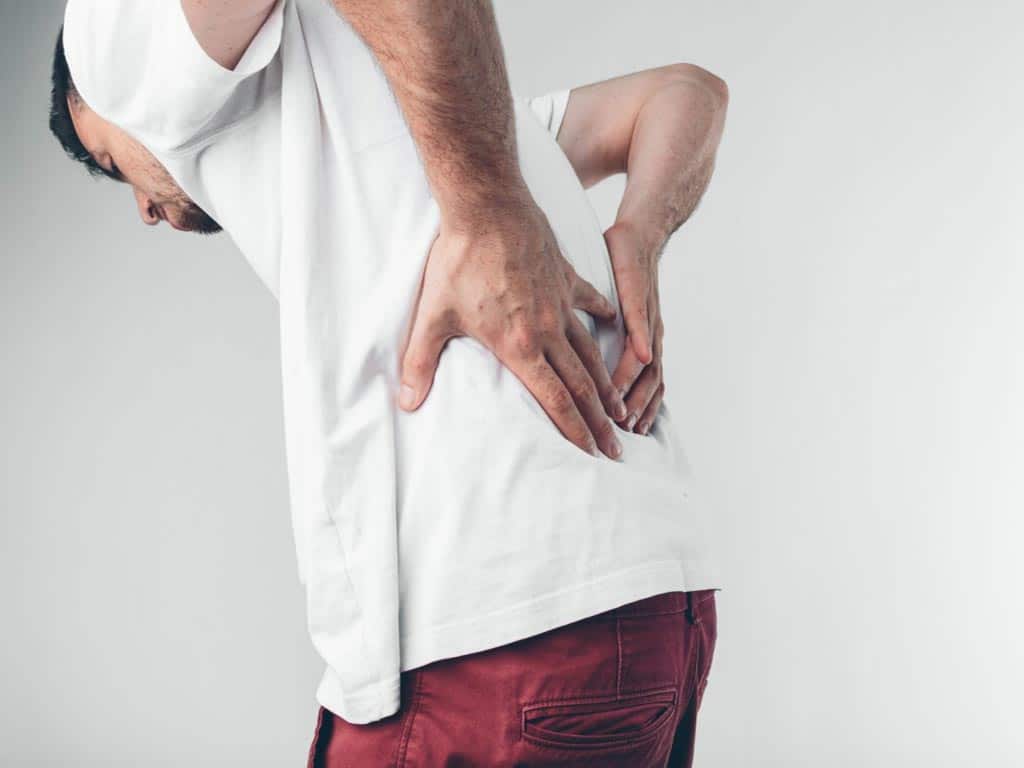
Backpain is a common ailment that affects millions of people worldwide. It can range from dull aches to sharp, shooting pain and greatly impact the quality of life. Fortunately, various management strategies and treatments are available to help alleviate the symptoms. The conventional pain relief methods include medications, physical therapy, and home remedies like hot and cold packs. Individuals may also employ innovative techniques like electrical stimulation. However, surgery may be considered as a last resort for severe cases.
Before delving into the management and treatment options, it is vital to understand the possible causes of backaches. Pain in the back can be caused by a variety of factors, including muscle strains, herniated discs, and underlying medical conditions such as kidney stones or infections. They can also be acute (short-term) or chronic (long-term). Thus, treatments may depend on the actual causes. This comprehensive guide will explore various approaches to managing and treating backaches.
Jump to a Section:
- Backpain Management – TENS Therapy
- Backpain Management – Exercises
- Backpain Management – Painkillers
- Backpain Management – Hot/Cold Packs
- Backpain Management – Massage Therapy
- Backpain Management – Chiropractic Care
- Backpain Management – Acupuncture
- Backpain Treatment – Physiotherapy
- Backpain Treatment – Prescription Medicine
- Backpain Treatment – Surgery
Backpain Management – TENS Therapy
Transcutaneous Electrical Nerve Stimulation (TENS) therapy is a non-invasive treatment option that uses a small, battery-operated device to deliver electrical impulses to the affected area. These impulses target the sensory nerves to help disrupt and block pain signals to the brain, providing temporary relief from backpain. It also helps to trigger the release of endorphins, alleviating pain and stress.
To use a TENS machine, simply place the adhesive electrodes on the pain area of the back. Typically, the pad placement should be on both sides of the spinal column. Then, turn on the unit and adjust the settings. Start with a low intensity and gradually increase until the electrical pulses feel strong but comfortable. Additionally, set the frequency level (high-TENS or low-TENS) depending on the type of pain.
TENS therapy can be used as a standalone treatment or in conjunction with methods. It can also be done at home or under the guidance of a doctor or physical therapist. Nevertheless, it is advisable to consult a healthcare professional before starting TENS therapy, especially for people with serious medical conditions.
Advantages of TENS
- Drug-free: TENS is a completely natural treatment method. The absence of medication reduces the risk of side effects, such as stomach upset and liver and kidney problems.
- Non-invasive: A TENS machine does not require incisions or injections, making it a safe and painless option for managing backaches.
- Customisable: The intensity and frequency are adjustable to suit individual needs and preferences. This allows for personalised treatment based on the severity of the pain.
- Cost-effective: TENS may have minimal ongoing cost compared to regular therapy sessions or frequent medicine purchases.
- Portable: TENS machines are small and lightweight, making them convenient to carry and use anywhere.

Backpain Management – Exercises
Managing backpain through exercises can be an effective way to improve flexibility and strength and reduce discomfort. Exercise is an essential component of treating backaches. It can help manage pain by increasing blood flow and nutrients to the soft tissues in the back, which can enhance healing and reduce stiffness.
Incorporating gentle exercise into daily routine can also help reduce the risk of future pain episodes. By engaging in regular physical activity, individuals can improve their posture and reduce strain on their back. Furthermore, maintaining a healthy weight through exercise can lower the potential of developing degenerative disc diseases like spinal stenosis and spondylolisthesis.
Individuals may start with short sessions and build up over time. Aerobic exercise, such as walking, swimming, and biking, can help reduce backaches. Additionally, core strengthening exercises can help build strength in the core muscles (abdominals, obliques, lower back) to provide stability and support to the spine. Stretching exercises can also help improve flexibility and reduce tension in the back muscles.
Types of Stretches to Try Out
There are several stretches that can improve backaches. One of the key exercises is the Cat-Cow stretch. This helps improve spinal flexibility and mobility while also relieving tension in the back muscles. Another type of stretch is the Child’s Pose. It provides a deep stretch to the lower back, hips, and thighs, helping to release tension in these areas.
Another effective stretch is the Pelvic Tilt. This exercise helps to strengthen the lower back and abdominal muscles, which are essential in maintaining good posture. Moreover, the Cobra Pose helps improve spinal alignment and opens the shoulder blades, neck, and collar bones.

Backpain Management – Painkillers
Oral painkillers for backpain are one of the most common treatment options. Medicines are often low-cost and readily available in pharmacies. There are various types of painkillers available over the counter (OTC) or through a prescription from a doctor. The most common types are non-steroidal anti-inflammatory drugs (NSAIDs) and acetaminophen.
NSAIDs work by blocking a specific enzyme called cyclooxygenase (or COX), which is used to make prostaglandins. By reducing the production of prostaglandins, NSAIDs help reduce inflammation and pain. They are effective in managing conditions like arthritis or muscle strain.
Acetaminophen is a pain reliever that can help with mild to moderate aches and reduce fever. It works by blocking pain signals in the brain, providing temporary relief from discomfort. Acetaminophen is often recommended for those who cannot take NSAIDs due to stomach issues or other health concerns. It is important to follow the recommended dosage when taking painkillers. Overuse or misuse of these medications can lead to adverse effects, such as liver damage or gastrointestinal issues.
OTC Medicines
OTC pain relievers are medicines that are available in pharmacies without a prescription. Common NSAIDs are ibuprofen, naproxen, and aspirin. Acetaminophen or paracetamols are also commonly found over the counter. They are generally safe and effective when taken as directed. Dosage recommendations may vary depending on the type of medication and individual health conditions.
When using OTC medicines, it is crucial not to exceed the recommended dose. They are beneficial for short-term use but can lead to serious side effects if taken long-term. Thus, always follow the directions of the specific medicine and consult a healthcare provider if back pain persists or worsens.

Backpain Management – Hot/Cold Packs
A simple way of managing backpain is through hot and cold packs. Applying heat to the affected area can help increase blood flow, relax muscles, and reduce stiffness. This can soothe soreness and increase flexibility in the muscles. Heat can be applied through a heating pad, warm towels, or hot water bottle. Individuals can use heat therapy for about 15-20 minutes at a time.
On the other hand, cold packs help reduce inflammation and numb the area to alleviate pain. It is particularly beneficial for acute injuries or flare-ups of back aches. Moreover, individuals can apply cold therapy through ice packs, frozen gel packs or even a bag of frozen peas wrapped in a towel.
Overall, utilising cold and heat packs as part of a comprehensive pain management plan can be an easy yet effective way to help alleviate symptoms. However, it is also vital to avoid using heat therapy on open wounds, swollen or bruised areas, and near an infection.
How to Use Hot/Cold Packs for Pain Relief
- First, use cold packs for 10-15 minutes to reduce swelling and numb the pain. This is applicable within 24-48 hours for acute back pain or sudden injuries.
- Apply a hot pack to the painful area for 15-20 minutes to help relax muscles and increase circulation to the affected area.
- After removing the heat or ice, let the area rest and return to room temperature.
- Alternate between hot and cold packs for maximum pain relief, starting and ending with cold.
- Make sure to place a cloth or towel between the pack and the skin to prevent burns or frostbite.

Backpain Management – Massage Therapy
Massage therapy is another effective way to manage backpain. It involves manipulating soft tissues to improve circulation, relax muscles, and reduce tension. Massage can also help to improve flexibility and range of motion in the spine, which can prevent further injury and keep the back strong and healthy. In addition, a skilled massage therapist can target specific areas of discomfort in the back to alleviate stiffness.
There are different types of massages that are beneficial for backaches. The first kind is the Swedish massage. It uses long strokes to promote relaxation. On the other hand, deep tissue massage applies firm pressure to release deep-seated muscle tension. This type can be intense but offers significant relief for chronic back pain.
Furthermore, neuromuscular massage targets myofascial trigger points, which are taut bands of tissues in the skeletal muscles. This massage can help reduce compression that causes referred pain. Lastly, Thai massage is a popular technique that can help relieve chronic low back pain. It enhances physical functions and improves mobility or the range of motion.
Benefits of Massages
Massage therapy offers a range of benefits for individuals. One of the main benefits is pain relief. The manipulation of soft tissues can target specific areas of discomfort and soothe soreness and stiffness. Additionally, it helps improve flexibility. Regular massages can help ease muscle tension and joint pains, making it easier to move and reduce the risk of future injuries.
Releasing tight muscles through massage can also help individuals maintain better posture. It reduces strain on the back and improves spine health. Finally, massages offer relaxation and stress-reducing effects. This helps to calm the nervous system and promote a sense of well-being.

Backpain Management – Chiropractic Care
Many people looking for alternative therapies to pharmacological pain treatment may find chiropractic care beneficial. It offers a holistic approach to treating the underlying causes of discomfort rather than just the symptoms. Chiropractors focus on the spine and its alignment, believing that misalignments can cause backpain and other health issues throughout the body.
During a chiropractic session, the chiropractor will perform a thorough assessment to identify any misalignments or subluxations in the spine. They will then use manual adjustments or manipulations to realign the spine, relieving pressure on nerves and restoring proper function. This can help alleviate back pain, improve mobility, and promote overall wellness.
Chiropractors may also incorporate other therapeutic modalities, such as massage therapy and lifestyle modifications, to help patients manage their backaches more effectively. By addressing the root causes of pain and promoting overall wellness, chiropractic care can not only alleviate symptoms but also prevent future issues from occurring. This offers a comprehensive and tailored approach to pain management.
How Does Chiropractic Care Help With Pain Relief?
Chiropractic care can help with pain relief by addressing the root cause of the pain rather than just masking the symptoms with medications. Chiropractors use hands-on techniques to realign the spine, which can alleviate pressure on the nerves. By correcting spinal misalignments, chiropractic care can reduce pain and improve joint functions.
This therapy may also include postural and exercise education, ergonomic training, and nutritional counselling. This holistic approach can help individuals manage chronic pain conditions, such as backaches, headaches, neck pain, and other musculoskeletal issues. Overall, chiropractic care is a safe and effective treatment option that focuses on promoting natural healing.

Backpain Management – Acupuncture
Acupuncture is a traditional Chinese medicine technique that involves inserting thin needles into specific points on the body. When it comes to managing backpain, acupuncture has been shown to be effective in reducing aches and improving mobility. Furthermore, studies show that acupuncture can help provide short-term relief for chronic pain and functional improvements.
One of the reasons why acupuncture is a popular pain management choice is that it has minimal side effects. Instead, it works with the energy pathways of the body to restore balance and relieve pain naturally. However, it is vital to use sterile needles and have a certified practitioner administer the treatment to ensure safety and effectiveness.
In addition to pain relief, acupuncture can help address the underlying causes of pain, such as poor posture, muscle imbalances, and stress. By addressing these root causes, acupuncture can help prevent future episodes of backaches and promote long-term wellness. Overall, it is a safe, effective and holistic approach to chronic pain management that can help individuals enhance their quality of life.
How Does Acupuncture Work?
- Acupuncture works by stimulating specific points in the body, known as acupoints or meridian points. These points are believed to correspond to different organs and systems, creating a flow of energy called Qi.
- The insertion of needles can help trigger the release of endorphins, the natural painkillers and mood enhancers of the body.
- By targeting specific meridian points related to backaches, acupuncture can address both the symptoms and the underlying causes of discomfort.
- Acupuncture promotes blood flow and circulation, promoting the healing of damaged tissues.
- Acupuncture can help increase the number of white blood cells, which boosts the immune system.

Backpain Treatment – Physiotherapy
Physiotherapy is another effective treatment option for backpain. This method helps restore movement, function, and mobility in the body that is affected by injury or illness. Moreover, physiotherapists are trained professionals who can assess, diagnose, and treat various musculoskeletal conditions. They use a combination of manual techniques to help improve strength and function in the affected area.
One of the key advantages of physiotherapy is that it is non-invasive. It is also a drug-free alternative, helping individuals avoid potential side effects and risks while managing pain. Additionally, physiotherapy focuses on long-term solutions rather than just providing temporary pain relief. This includes joint mobilisation, electrotherapy, range of motion assessment, and more.
Regular physiotherapy sessions can help eliminate or reduce pain, strengthen muscles and joints and restore flexibility. Improving overall strength and coordination makes the muscles and connective tissues stronger, making them less susceptible to injuries. It is also beneficial for individuals recovering from surgery and sports injuries, allowing them to return to their normal activities in a shorter period.
Physiotherapy with TENS
Health professionals may suggest a multi-modal approach to help enhance the effectiveness of pain treatments. Combining physiotherapy and TENS provides additional relief for backaches. TENS can help reduce muscle spasms, improve circulation, and increase the range of motion. This makes it valuable for people with acute pain, such as injuries and accelerates their recovery.
Furthermore, it can be beneficial for long-term pain management, as it focuses on providing tailored care that addresses the specific needs of each individual. By combining the two therapies, it can manage more types of pain effectively. This provides a more comprehensive natural pain relief.

Backpain Treatment – Prescription Medicine
A doctor may prescribe medication to help patients manage backpain, especially in cases where the pain is severe. The first type is opioids. They are powerful painkillers that work by blocking pain signals in the brain. It is suitable for chronic conditions or severe pain that does not improve with conventional treatments or OTC medicines.
Muscle relaxants are another type of prescription drug that can help treat backaches. These medications may work by targeting the central nervous system and reducing the signals that make the muscles contract involuntarily. As a result, it helps relax tense muscles, relieve spasms, and alleviate pain. However, they may cause drowsiness, making it important to use them with caution.
Moreover, epidural injections provide temporary or lasting relief for pain in the spine or extremities. These injections deliver corticosteroids directly into the spinal canal, reducing inflammation and relieving pain. It is essential to follow the instructions and dosages when taking prescription medications to avoid adverse risks, such as addiction and dependency.
Injections
Epidural injections work by delivering medication directly into the epidural space around the spinal cord and nerves. This medication includes a combination of local anaesthetic and a corticosteroid to relieve pain. In addition, a trained professional performs this procedure using fluoroscopy guidance to ensure accurate placement of the needle.
Once the medication is injected, it targets the genes that are responsible for regulating inflammation. It also blocks the transmission of pain signals from the nerves to the brain, providing relief for sciatica or herniated discs. While they can be an effective pain relief method, injections are not a cure for the underlying cause.

Backpain Treatment – Surgery
In some cases, pain may be severe or persistent enough to require surgical intervention. Surgery for backpain is usually a last resort option when other non-invasive treatments fail to provide relief. There are several types of back surgery that may be recommended depending on the underlying cause of the pain.
A common procedure is discectomy. It involves removing a portion of a damaged disc in the spine that causes pain or weakness. This helps alleviate pressure on the nerves, treating pain that travels to the arms or legs due to compression. Another type of surgery is spinal fusion. It involves joining two or more vertebrae together to stabilise the spine and reduce pain.
Additionally, laminectomy is a procedure that removes bones from the back of the spine to make room for the nerves. However, surgery is not without risks and potential complications. Like any medical procedure, there is a risk of infection, blood clots, and adverse reactions to anaesthesia. Recovery time can also be lengthy, and physical therapy may be necessary to regain strength and mobility in the back.
When to Consider Surgery
- Health professionals may suggest surgery when non-surgical treatments have not provided significant pain relief.
- If back pain is caused by a structural issue like a herniated disc or spinal stenosis.
- When there is weakness, numbness, or loss of sensation in the legs or feet.
- If back pain is debilitating and impacting daily activities and quality of life.
- Severe back injuries or spinal fractures.
- Spinal fusion can be considered for spondylolisthesis or a vertebra that has slipped forward.
- Pain that radiates to the arms or legs.
- Persistent pain in the back and reduced mobility.
- A spinal deformity that is progressing.
Conclusion
Backpain can be debilitating and significantly impact the quality of life. Various causes can lead to backaches, and they may vary in terms of severity or duration. Therefore, seeking pain relief is essential to manage the symptoms and improve daily functioning. Individuals with acute or chronic conditions may consider various options available. They may range from conservative treatments like physical therapy, TENS, and medication to more invasive options like injections or surgery.
Pain and pain management can be complex. The goal of any treatment is to reduce pain, improve function, and avert potential risks. Consulting with a healthcare professional is crucial to understand the cause of the pain and find the most appropriate treatment options. They may also recommend trying conventional pain relief methods before considering prescription medications and surgery. Nevertheless, weighing the risks and benefits of each option is important before making a decision.




















